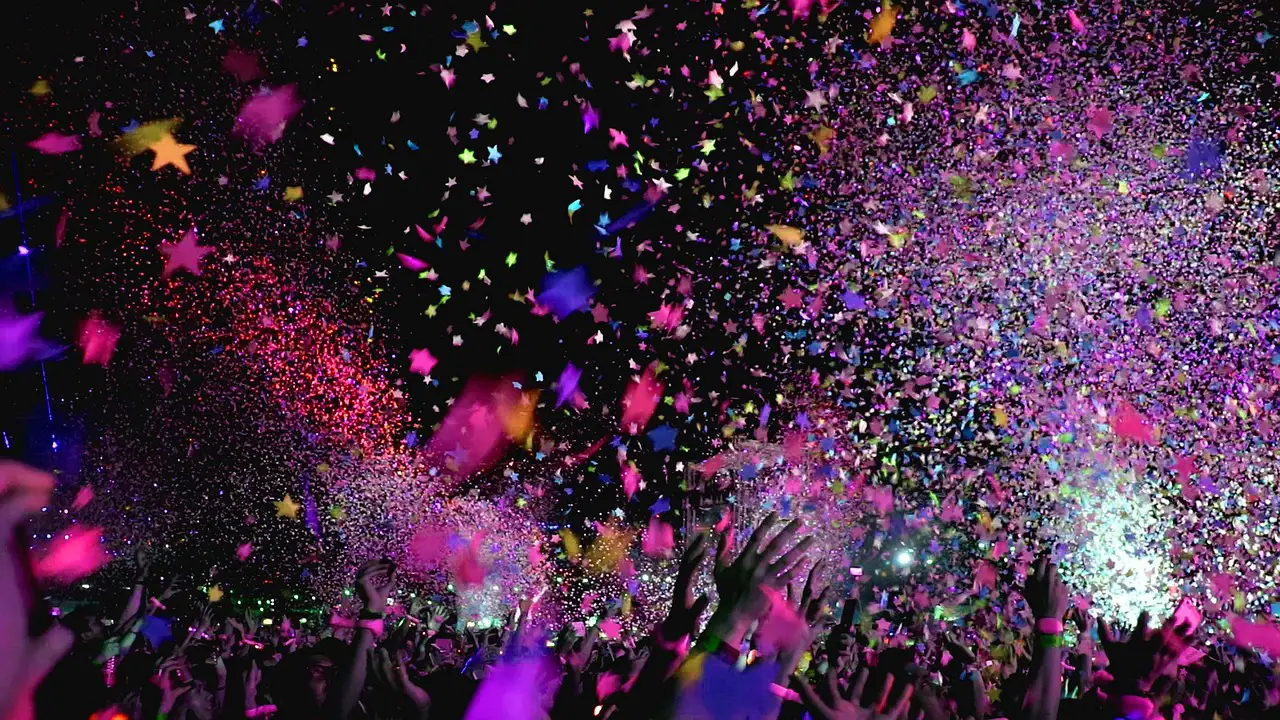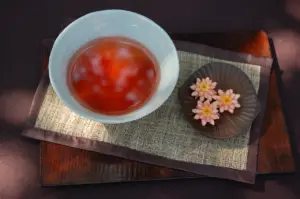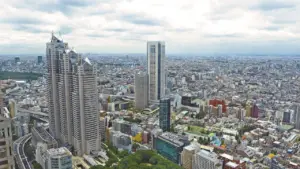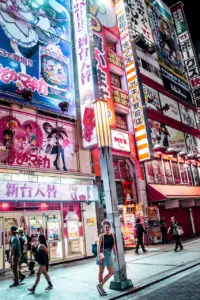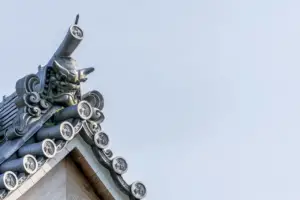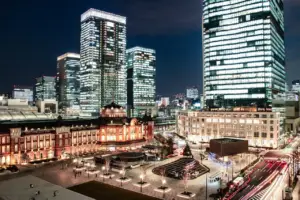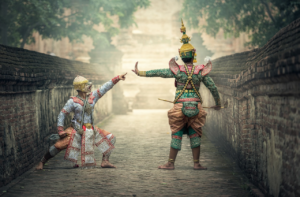Japan is a country renowned for its vibrant culture and rich history, which is celebrated through a myriad of events and festivals throughout the year. These festivals are an integral part of Japanese life and offer visitors a unique opportunity to experience the country’s traditions, customs, and hospitality.
However, attending an event or festival in Japan can be overwhelming for first-time visitors, especially because of the language barrier and cultural differences. Therefore, it is essential to have a comprehensive guide that can help visitors navigate the festivities and make the most of their experience.
This article provides ten essential tips that will help visitors enjoy events and festivals in Japan. These tips cover essential aspects such as planning ahead, dressing appropriately, arriving early, bringing cash, staying hydrated, exploring the surrounding areas, respecting the environment, and most importantly, having fun.
With these tips, visitors can immerse themselves in the local culture, taste the delicious food, and witness the incredible performances that make Japan’s events and festivals so unique and memorable.
Key Takeaways
- Advanced preparation is key, including researching the event, arranging transportation and accommodations, and considering weather conditions.
- Respect cultural norms and traditions, dress appropriately, arrive early, and secure a good spot.
- Bring sufficient cash and reduce plastic waste, while staying hydrated and exploring the surrounding area.
- Participate in traditional activities, enjoy local food, music, and performances, and follow event organizers’ rules and regulations.
Plan ahead
Prioritizing advanced preparation is imperative for maximizing enjoyment and minimizing stress when partaking in the numerous cultural events and festivals that Japan offers.
First and foremost, it is essential to research the event or festival you plan on attending. This involves understanding the history, significance, and customs of the event. By doing so, you will be able to fully appreciate and respect the cultural significance of the event, as well as avoid any unintentional faux pas.
In addition, planning ahead includes arranging transportation and accommodations. Many events and festivals are located in remote areas, and popular events can attract large crowds, making reservations essential. It is also important to consider the time of year and weather conditions, as some events may be affected by typhoons or heavy snowfall.
By preparing in advance, you can ensure a smooth and enjoyable experience at the event or festival.
Dress appropriately
When attending events and festivals in Japan, it is important to dress appropriately to ensure a comfortable and respectful experience. This requires considering the weather, as Japan experiences varying temperatures and climate conditions throughout the year.
Additionally, it is crucial to respect cultural norms by dressing appropriately for the occasion and location. By adhering to these guidelines, visitors can fully immerse themselves in the rich cultural experience that Japan has to offer.
Consider the weather
It is important to take the weather into account when planning to attend events and festivals in Japan. Japan experiences four distinct seasons, with each season having its own unique weather conditions. It is essential to research and prepare for the weather conditions that may be present during the event or festival you plan to attend.
Summer in Japan can be hot and humid, with temperatures ranging from 25 to 35 degrees Celsius. It is advisable to wear lightweight and breathable clothing such as cotton, linen, or silk, and carry a portable fan or a parasol. During the rainy season, which usually starts in June and lasts until July, it is essential to carry an umbrella or raincoat.
Winter in Japan can be cold and snowy, with temperatures ranging from 0 to 10 degrees Celsius. It is advisable to wear warm and waterproof clothing, including jackets, boots, and gloves, to keep yourself comfortable during the festival or event.
In conclusion, taking the weather conditions into account and preparing accordingly can significantly enhance your experience of attending events and festivals in Japan.
Respect cultural norms
Respecting cultural norms is crucial for visitors attending events and festivals in Japan to avoid offending the locals and to fully appreciate the cultural significance of the event.
One of the most important things to keep in mind is the concept of ‘omotenashi,’which refers to the Japanese tradition of hospitality and politeness. Visitors should be mindful of their behavior and actions, such as not littering or being too loud, as these can be seen as disrespectful and disruptive to locals. Additionally, visitors should take note of the dress code and appropriate attire for the event or festival, as some events may require more formal dress or traditional clothing.
Another essential aspect of respecting cultural norms is understanding and following the customs and traditions of the event or festival. For example, some events may involve religious or spiritual practices, and visitors should be respectful of these practices even if they do not share the same beliefs. Visitors should also be aware of the specific etiquette and manners associated with the event, such as bowing or offering gifts to local participants.
By observing and respecting these cultural norms, visitors can fully immerse themselves in the event or festival and gain a greater appreciation for Japan’s rich cultural heritage.
Arrive early
When attending events and festivals in Japan, arriving early is essential to avoid crowds and secure a good spot. This simple tip can make all the difference in your overall experience, allowing you to fully enjoy the event without the stress of navigating through a sea of people or struggling to see the main attraction.
By arriving early, you have the opportunity to explore the venue, take in the surroundings, and prepare yourself for an unforgettable experience.
Avoid crowds
To minimize the impact of large crowds, identifying less busy times and areas of the event is a useful strategy for enjoying events and festivals in Japan.
Some tips for avoiding crowds include arriving early in the morning or late in the evening, as these times tend to be less busy. Additionally, exploring the outskirts of the festival can often lead to less crowded areas with equally enjoyable activities.
Another helpful tip is to plan ahead and research the event beforehand to identify areas or activities that are less popular. For example, if a festival has multiple stages or areas, it may be beneficial to focus on the areas with less popular performers or activities. This can help avoid the larger crowds and allow for a more enjoyable experience.
Overall, taking the time to plan and strategize can greatly enhance the experience of attending events and festivals in Japan.
Secure a good spot
Securing a good spot at events and festivals in Japan can greatly enhance the overall experience for attendees. As these events can draw large crowds, finding a good spot early on can ensure a comfortable and enjoyable experience. It is recommended to arrive early, especially for popular events, to secure a good spot. This can also provide an opportunity to explore the area and take in the atmosphere before the event begins.
Once a spot has been secured, it is important to be mindful of others around you. Avoid blocking the view of those behind you and be considerate of the space you are occupying. It is also advisable to bring a small folding chair or cushion to sit on, as standing for long periods of time can be tiring.
By securing a good spot and being mindful of others, attendees can fully enjoy the event or festival without feeling cramped or uncomfortable.
Bring cash
When attending events and festivals in Japan, it is essential to bring sufficient cash as many vendors may only accept cash payments.
It is important to note that ATMs may be crowded or unavailable, especially during peak festival periods.
To avoid any inconvenience, it is recommended to have enough cash on hand to cover expenses throughout the day.
Many events are cash-only
Interestingly, many events and festivals in Japan only accept cash payments, which can be a challenge for travelers who rely on credit cards or digital payment methods. This is due to the fact that cash is still widely used in Japan, especially in smaller establishments.
Many vendors at events and festivals may not have the necessary equipment to accept credit cards or digital payments, which means that visitors must have sufficient cash on hand to fully enjoy the experience. It is important to note that the amount of cash needed will depend on the event or festival. Some may have ATMs available, while others may not.
It is always a good idea to research the event beforehand to determine how much cash to bring. Additionally, it is important to keep the cash safe while at the event. Pickpocketing is rare in Japan, but it is always better to be cautious and keep valuables close.
Overall, being prepared with enough cash will ensure a smooth and enjoyable experience at events and festivals in Japan.
ATMs may be crowded or unavailable
Accessing cash through ATMs in Japan can be a challenge for travelers due to the possibility of crowded or unavailable machines. It is important to note that many ATMs in Japan are closed during weekends, public holidays and outside of business hours. Moreover, not all ATMs accept foreign cards, and even if they do, the transaction fee may be high. Therefore, it is important to plan ahead and have enough cash on hand to avoid any inconvenience.
To ensure a hassle-free experience while accessing cash in Japan, here are some essential tips to follow:
-
Look for ATMs in post offices, convenience stores or 7-Eleven shops as they usually accept foreign cards.
-
Check with your bank to confirm if they have a partnership with any Japanese banks that allow for free or low-cost withdrawals.
-
Consider getting a prepaid card, such as a Suica or Pasmo card, which can be used for transportation and shopping at many places.
-
Always carry some cash with you as some shops and restaurants may only accept cash payments.
By following these tips, travelers can avoid any difficulties in accessing cash while enjoying events and festivals in Japan.
Stay hydrated
Staying hydrated is crucial when attending events and festivals in Japan. With the hot and humid weather during the summer season, it is important to bring a water bottle to keep yourself hydrated throughout the day.
Additionally, many events and festivals offer hydration stations where you can refill your water bottle for free, so be sure to keep an eye out for them.
Ensuring that you stay hydrated will not only help you enjoy the event or festival, but it will also keep you healthy and energized.
Bring a water bottle
One practical suggestion for those attending events and festivals in Japan is to bring a refillable water bottle to stay hydrated amidst the warm temperatures and crowds.
Japan is known for its hot and humid summers, and many festivals take place outdoors in the heat of the day.
Having a water bottle on hand not only helps to prevent dehydration but also saves money by avoiding the need to purchase drinks at the festival.
It is important to note that many festivals in Japan have limited access to water sources, and lines for water fountains or water vendors can be long and time-consuming.
Bringing a refillable water bottle ensures that attendees have access to water at all times and can avoid the hassle of waiting in line.
Additionally, bringing a reusable bottle is an eco-friendly option that reduces waste and promotes sustainability, which is especially important in a country that places great importance on environmental conservation.
Look for hydration stations
Hydration stations can be easily found at festivals and events in Japan by looking for signs or asking event staff. These stations are set up to provide attendees with free drinking water and other refreshments to help them stay hydrated throughout the event. Hydration is essential, especially during hot and humid summer months when dehydration can occur quickly.
To make the most out of hydration stations at events and festivals in Japan, consider the following tips:
-
Bring a refillable water bottle: Hydration stations are designed for refilling water bottles, so make sure to bring one to save money and reduce plastic waste.
-
Take advantage of free refreshments: In addition to water, hydration stations often provide free sports drinks, tea, and other beverages to help replenish electrolytes lost through sweating.
-
Follow event staff instructions: Event staff may have specific rules regarding the use of hydration stations, such as a limit on the amount of water you can refill at one time.
-
Plan ahead: Hydration stations can sometimes be crowded, so plan ahead and refill your water bottle before you run out of water. This will ensure that you have access to hydration whenever you need it.
By following these tips, you can stay hydrated and enjoy your time at events and festivals in Japan. Remember to drink plenty of water, especially when temperatures are high, to avoid dehydration and ensure a safe and enjoyable experience.
Explore the surrounding area
Venturing beyond the festival grounds can provide a unique glimpse into the local culture and traditions, making it worth exploring the surrounding area. Japan is a country rich in history, and each region boasts its unique cultural heritage. Visitors can take advantage of the festival’s location to explore the area and learn more about the local customs and lifestyle. In addition to attending the festival, tourists can visit nearby museums, temples, and shrines, or even shop at local markets to experience the local culture fully.
To make the most out of the surrounding area, it’s essential to plan ahead. Researching the area before visiting can be helpful to identify what to see and do. In most cases, the festival’s organizers may provide information about the surrounding area or even offer guided tours. Visitors can also ask locals or hotel staff for recommendations on places to visit or where to eat. Exploring the surrounding area not only adds to the festival experience but also provides a more comprehensive understanding of Japan’s culture and history.
| Place to Visit | Details |
|---|---|
| Meiji Shrine | A popular Shinto shrine in Tokyo |
| Fushimi Inari Taisha | A shrine in Kyoto famous for its thousands of vermillion torii gates |
| Arashiyama Bamboo Grove | A natural forest in Kyoto known for its bamboo trees |
Table 1: Popular places to visit in Japan
Respect the environment
When exploring the surrounding area of events and festivals in Japan, it is important to always be mindful of the environment. While it may be tempting to discard trash or ignore litter, Japanese culture places a strong emphasis on cleanliness and respect for nature. Therefore, visitors to these events should be aware of their impact on the environment and take steps to minimize it.
To help visitors respect the environment during events and festivals in Japan, here are four essential tips to keep in mind:
-
Bring a reusable water bottle and refill it at designated water stations to reduce plastic waste.
-
Dispose of trash properly in designated bins and avoid littering on the streets or in public areas.
-
Respect the natural surroundings by refraining from damaging plants or disturbing wildlife.
-
Consider using public transportation or walking to the event to reduce carbon emissions and traffic congestion.
By following these simple tips, visitors can enjoy the events and festivals in Japan while also helping to preserve the environment for future generations.
Have fun!
When attending events and festivals in Japan, it is important to remember to have fun and fully immerse yourself in the experience.
This means taking the time to explore the surroundings, try new foods and participate in the activities offered.
Additionally, taking photos and making memories is a great way to preserve the experience and share it with others.
By embracing the spirit of the event and being present in the moment, you can truly appreciate the unique cultural experience that Japan has to offer.
Immerse yourself in the experience
To fully appreciate events and festivals in Japan, it is crucial to immerse oneself in the experience by participating in various activities and embracing the local customs and traditions. Japanese festivals are deeply rooted in the country’s culture and history, and each event has its unique set of customs and practices.
For example, during the Tanabata Festival, people write their wishes on colorful strips of paper and hang them on bamboo trees. Similarly, during the Obon Festival, people light lanterns to guide the spirits of their ancestors back home. By participating in these activities, one can gain a better understanding of Japanese culture and the significance of these events.
Apart from participating in traditional activities, visitors can also enjoy the food, music, and performances that are an integral part of Japanese festivals. Many festivals have food stalls that offer local delicacies such as takoyaki (octopus balls), yakitori (grilled chicken skewers), and taiyaki (fish-shaped cakes filled with sweet bean paste). Visitors can also witness traditional performances such as taiko drumming, yosakoi dance, and kabuki theater.
By immersing oneself in the local customs and traditions, visitors can gain a deeper appreciation of Japanese culture and create unforgettable memories.
Take photos and make memories
Photography serves as an effective means of capturing the essence of Japanese festivals, allowing visitors to create lasting memories of their experiences. With the abundance of vibrant and intricate displays, cultural performances, and colorful costumes, festivals in Japan offer a wealth of opportunities for photographers to capture stunning shots.
From the famous cherry blossom viewing in spring to the lively summer festivals such as the Gion Matsuri, photographing events in Japan allows visitors to document and share their experiences with others.
It is important to note, however, that taking photos during festivals should be done with respect for the culture and the people involved. Visitors should follow the rules and regulations set by the event organizers, and avoid obstructing the view of others.
Furthermore, visitors should also be mindful of the privacy of individuals, especially during religious ceremonies or events where participants may be in a state of undress.
By taking photos mindfully and respectfully, visitors can create meaningful and memorable souvenirs of their experiences at Japanese festivals.
Frequently Asked Questions
What are some common Japanese festival foods and drinks to try?
Japanese festivals are renowned for their delicious and unique food offerings. Some common festival foods include takoyaki, which are small, fried balls of batter and octopus; yakisoba, a stir-fried noodle dish; and okonomiyaki, a savory pancake made with cabbage and various fillings.
Another popular festival food is taiyaki, a fish-shaped pastry filled with sweet red bean paste. In terms of drinks, Japanese festivals often feature sake, a traditional rice wine, as well as various types of beer and soft drinks. Visitors may also try shochu, a distilled spirit, or chu-hai, a popular alcoholic beverage made with shochu and various fruit flavors.
Overall, attending a Japanese festival is a great opportunity to try a variety of unique and delicious foods and drinks.
Are there any cultural customs or etiquette rules to be aware of when attending festivals in Japan?
When attending festivals in Japan, it is important to be aware of certain cultural customs and etiquette rules.
For example, it is customary to remove your shoes before entering a temple or shrine. Additionally, it is polite to bow when greeting someone, and to use honorific language (such as adding ‘-san’ to someone’s name) when speaking to someone who is older or of higher status.
It is also important to be respectful of the environment and not litter or make loud noises. Finally, it is important to dress appropriately and avoid wearing revealing or provocative clothing, as this may be seen as disrespectful.
By following these customs and etiquette rules, you can ensure that you have a positive and respectful experience at festivals in Japan.
What are some popular festivals or events that take place in Japan throughout the year?
Japan boasts a diverse range of festivals and events throughout the year.
One of the most famous is the Cherry Blossom Festival, which takes place in late March to early April and celebrates the arrival of spring with its iconic pink blooms.
Another popular event is the Gion Matsuri festival, held in Kyoto in July, which features ornate floats and traditional performances.
The Sapporo Snow Festival, held in February, showcases massive snow sculptures and attracts millions of visitors each year.
Other notable festivals include the Aomori Nebuta Festival, the Takayama Matsuri, and the Setouchi Triennale art festival.
With so many unique events to choose from, there is always something exciting happening in Japan.
Is it common for festivals in Japan to have admission fees or require advanced ticket purchases?
Admission fees and advanced ticket purchases are common for festivals in Japan, particularly those that are popular and attract a large number of visitors.
The fees and ticket prices vary depending on the festival, with some offering free admission while others require a fee.
Some festivals have different ticket tiers, with prices varying depending on the level of access granted to visitors.
Advanced ticket purchases are often recommended as popular festivals can quickly sell out, and purchasing tickets in advance guarantees entry.
It is also important to note that some festivals may have restrictions on photography, food and drink consumption, and dress codes, so it is advisable to research the festival beforehand.
Are there any safety precautions to keep in mind when attending large festivals or events in Japan?
When attending large festivals or events in Japan, it is important to keep safety precautions in mind. The sheer number of attendees can make it difficult to navigate through the crowds, so it is recommended to wear comfortable shoes and clothing.
Additionally, it is important to stay hydrated, as the weather can be hot and humid during certain times of year. It is also recommended to keep an eye on personal belongings, as pickpocketing can occur in crowded areas.
In case of emergency, it is important to know the location of the nearest medical facilities and police stations. It is also recommended to have a basic understanding of Japanese language and culture, as it can be helpful in communicating with locals and understanding the festival or event’s customs and traditions.
By taking these safety precautions, attendees can fully enjoy the festivities without any major mishaps.
Conclusion
When attending events and festivals in Japan, it is important to plan ahead by researching the events schedule and location, as well as transportation options.
Dress appropriately for the weather and occasion, and arrive early to avoid crowds and ensure a good spot.
Be prepared with cash, as many events do not accept credit cards.
Staying hydrated is essential during long events, so bring a water bottle and refill it at designated stations.
Take the opportunity to explore the surrounding area and discover local attractions.
Respect the environment by disposing of trash properly and following event rules.
Above all, have fun and enjoy the unique cultural experiences that Japans events and festivals have to offer.
With these essential tips in mind, attendees can make the most of their time and create lasting memories.


